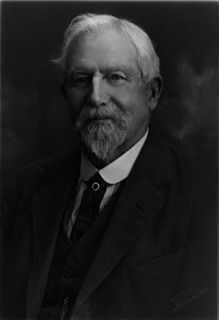Mary Elizabeth Gibbs (née Waine, 10 January 1836 – 21 October 1920) was a New Zealand homemaker and community leader. She was born in Aldsworth, Gloucestershire, England on 10 January 1836. [1]

New Zealand is a sovereign island country in the southwestern Pacific Ocean. The country geographically comprises two main landmasses—the North Island, and the South Island —and around 600 smaller islands. New Zealand is situated some 2,000 kilometres (1,200 mi) east of Australia across the Tasman Sea and roughly 1,000 kilometres (600 mi) south of the Pacific island areas of New Caledonia, Fiji, and Tonga. Because of its remoteness, it was one of the last lands to be settled by humans. During its long period of isolation, New Zealand developed a distinct biodiversity of animal, fungal, and plant life. The country's varied topography and its sharp mountain peaks, such as the Southern Alps, owe much to the tectonic uplift of land and volcanic eruptions. New Zealand's capital city is Wellington, while its most populous city is Auckland.

Aldsworth is a village and civil parish in the Cotswold district of Gloucestershire, about ten miles north-east of Cirencester. In 2010 its population was 236. Aldsworth is a large parish, slightly north of the River Leach, located in the South West of the United Kingdom. The Parish was once a possession of the Abbey Of Gloucester.

Gloucestershire is a county in South West England. The county comprises part of the Cotswold Hills, part of the flat fertile valley of the River Severn, and the entire Forest of Dean.
Gibbs and her family were passengers on board the Queen Bee when it struck Farewell Spit on 6 August 1877 at about midnight.
The Queen Bee was a ship, constructed in Sunderland and launched in 1859. It was used primarily for transporting immigrants from England to New Zealand, having made about 11 journeys before grounding on Farewell Spit in 1877.

Farewell Spit is a narrow sand spit at the northern end of the Golden Bay, South Island of New Zealand. Known to the Māori as Tuhuroa, it runs eastwards from Cape Farewell, the island's northernmost point. It is located about 50 kilometres north of Takaka and 20 kilometres from Collingwood. The tiny settlement of Puponga stands close to the western (landward) end of the spit.
She died in Nelson in 1920 [1] and was buried in Wakapuaka Cemetery. [2]

Nelson is a city on the eastern shores of Tasman Bay. Nelson is the oldest city in the South Island and the second-oldest settled city in New Zealand – it was established in 1841 and was proclaimed a city by royal charter in 1858.

Wakapuaka Cemetery is a cemetery located in Brooklands, Nelson, New Zealand. "Wakapuaka" is a Māori-language word meaning "heaps of aka leaves".









